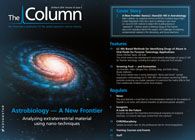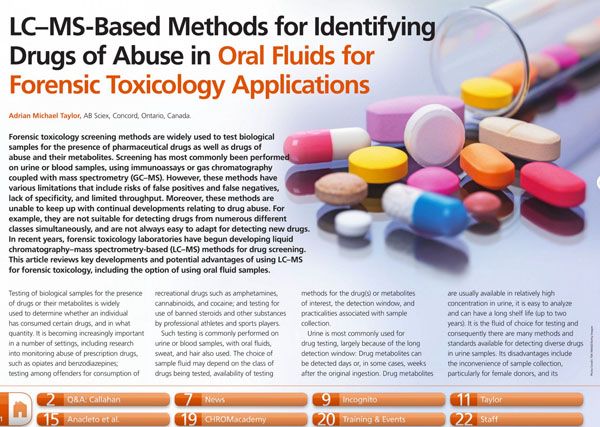LC–MS–Based Methods for Identifying Drugs of Abuse in Oral Fluids for Forensic Toxicology Applications
This article reviews key developments and potential advantages of using LC–MS for forensic toxicology, including the option of using oral fluid samples.
Forensic toxicology screening methods are widely used to test biological samples for the presence of pharmaceutical drugs as well as drugs of abuse and their metabolites. Screening has most commonly been performed on urine or blood samples, using immunoassays or gas chromatography coupled with mass spectrometry (GC–MS). However, these methods have various limitations that include risks of false positives and false negatives, lack of specif city, and limited throughput. Moreover, these methods are unable to keep up with continual developments relating to drug abuse. For example, they are not suitable for detecting drugs from numerous different classes simultaneously, and are not always easy to adapt for detecting new drugs. In recent years, forensic toxicology laboratories have begun developing liquid chromatography–mass spectrometry-based (LC–MS) methods for drug screening. This article reviews key developments and potential advantages of using LC–MS for forensic toxicology, including the option of using oral fluid samples.

New Study Reviews Chromatography Methods for Flavonoid Analysis
April 21st 2025Flavonoids are widely used metabolites that carry out various functions in different industries, such as food and cosmetics. Detecting, separating, and quantifying them in fruit species can be a complicated process.













